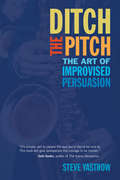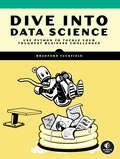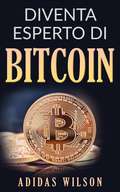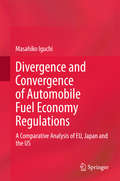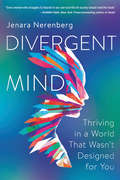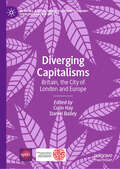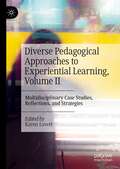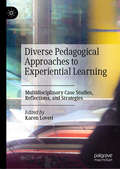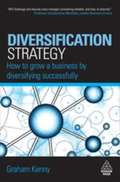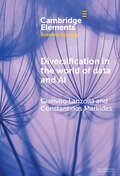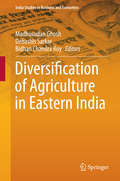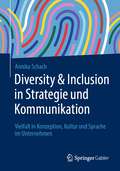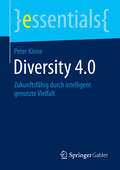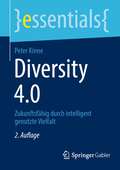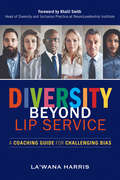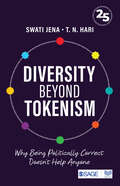- Table View
- List View
Ditch the Pitch
by Steve YastrowIn today's world, customers don't want to hear sales pitches, but so many salespeople still rely on them. In his breakthrough handbook, Ditch the Pitch, Steve Yastrow, founder of a successful business strategy consulting firm, asks us to throw out everything we've been taught about pitching to customers. Steve's advice: tear up your sales pitch and instead improvise persuasive conversations. Ditch the Pitch is an essential read for salespeople, business managers, and anyone wishing to persuade those around them. Organized into six habits, with each habit consisting of three practices necessary for mastery, Ditch the Pitch is designed to teach Yastrow's approach to fresh, spontaneous, persuasive conversations. These new skills will show the reader how to identify the details that make each customer unique and subsequently navigate a conversation that focuses on the right message for the right customer at the right time. Throughout the book, the author quotes well-known improv comedians and musicians. He translates the techniques these artists use when improvising to create persuasive situations with customers. With the new confidence Ditch the Pitch offers, you will become master of the art of on-the-spot, engaging, and effective customer interactions. Let go of pre-written scripts and embrace Yastrow's guidelines for effortlessly enabling spontaneous conversations that persuade customers to say "yes. "
Ditch the Pitch: The Art of Improvised Persuasion
by Steve YastrowIn today's world, customers don't want to hear sales pitches, but so many salespeople still rely on them. In his breakthrough handbook, Ditch the Pitch, Steve Yastrow, founder of a successful business strategy consulting firm, asks us to throw out everything we've been taught about pitching to customers. Steve's advice: tear up your sales pitch and instead improvise persuasive conversations. Ditch the Pitch is an essential read for salespeople, business managers, and anyone wishing to persuade those around them. Organized into six habits, with each habit consisting of three practices necessary for mastery, Ditch the Pitch is designed to teach Yastrow's approach to fresh, spontaneous, persuasive conversations. These new skills will show the reader how to identify the details that make each customer unique and subsequently navigate a conversation that focuses on the right message for the right customer at the right time.
Dive Into Data Science: Use Python To Tackle Your Toughest Business Challenges
by Bradford TuckfieldLearn how to use data science and Python to solve everyday business problems.Dive into the exciting world of data science with this practical introduction. Packed with essential skills and useful examples, Dive Into Data Science will show you how to obtain, analyze, and visualize data so you can leverage its power to solve common business challenges.With only a basic understanding of Python and high school math, you&’ll be able to effortlessly work through the book and start implementing data science in your day-to-day work. From improving a bike sharing company to extracting data from websites and creating recommendation systems, you&’ll discover how to find and use data-driven solutions to make business decisions.Topics covered include conducting exploratory data analysis, running A/B tests, performing binary classification using logistic regression models, and using machine learning algorithms.You&’ll also learn how to:Forecast consumer demand Optimize marketing campaignsReduce customer attritionPredict website trafficBuild recommendation systemsWith this practical guide at your fingertips, harness the power of programming, mathematical theory, and good old common sense to find data-driven solutions that make a difference. Don&’t wait; dive right in!
Diventa esperto di Bitcoin
by Adidas Wilson Andrea GiampaoliIl Bitcoin è una criptovaluta ed un sistema di pagamento digitale ideato da uno sviluppatore sconosciuto, o da un gruppo di sviluppatori sotto il nome di Satoshi Nakamoto. Venne pubblicato come software open-source nel 2009. Il sistema è peer-to-peer e le transazioni vengono effettuate direttamente tra gli utenti, senza un intermediario. Queste transazioni vengono in seguito verificate dai nodi del network e registrate in un libro contabile pubblico chiamato blockchain. Poiché il sistema funziona senza un database centrale o un amministratore, il Bitcoin viene definito come la prima valuta digitale decentralizzata. Oltre ad essere creato come premio per il mining, il Bitcoin può essere scambiato con altre valute, prodotti e servizi nei mercati legali o nei mercati di contrabbando. Nel Febbraio 2015 oltre 100.000 commercianti e venditori accettavano pagamenti in Bitcoin. Secondo una ricerca dell'Università di Cambridge pubblicata nel 2017, ci sono da 2.9 a 5.8 milioni di utenti che usano un portafoglio di criptovalute, e la maggior parte di essi usano i Bitcoin.
Divergence and Convergence of Automobile Fuel Economy Regulations
by Masahiko IguchiThis book reveals the mechanisms underlying the convergence of car fuel economy regulations in Europe, Japan and the US by drawing upon a constructivist theory of International Relations and law that focuses on business competition and environmental regulations. It offers new understanding of the topic of cars and an issue of climate change, discussing the emerging phenomenon of convergence of fuel economy regulations; addressing the role of business actors in pushing for climate change action; proposing the new model of agency with and beyond states; and providing insightful case studies from Europe, Japan and the US. The opening chapter reviews the automobile industry and global climate change, providing a background for the discussion to follow. Chapter 2, Business Actors and Global Environmental Governance, grounds the discussion in the field of environmental governance. The third chapter is a case study examining the construction and timing of the European Union's climate policies for automobile CO2 emissions, discussing the underlying factors and the actors influencing the policies. The following chapter argues that Japan adopted its stringent fuel economy regulations primarily because of industry competitiveness, motivated by stringent environmental regulations in export markets and encouraged by a tradition of 'co-regulation' and 'corporatism' to enhance the regulations. Chapter 5 asks why the US, the first country to introduce fuel economy regulations, spent two decades in regulatory stagnation, and discusses how recent US fuel economy regulations came to converge with Japanese and European standards. Chapter 6 compares, contrasts and analyzes fuel economy regulations among the three case studies and identifies policy implications for the future climate governance for 2015 and beyond. The final chapter explores applicability of the 'agency with and beyond the state' model to other sectors and to climate governance as a whole.
Divergent Mind: Thriving in a World That Wasn't Designed for You
by Jenara NerenbergAUDIBLE EDITOR'S PICKA paradigm-shifting study of neurodivergent women—those with ADHD, autism, synesthesia, high sensitivity, and sensory processing disorder—exploring why these traits are overlooked in women and how society benefits from allowing their unique strengths to flourish.As a successful Harvard and Berkeley-educated writer, entrepreneur, and devoted mother, Jenara Nerenberg was shocked to discover that her “symptoms”--only ever labeled as anxiety-- were considered autistic and ADHD. Being a journalist, she dove into the research and uncovered neurodiversity—a framework that moves away from pathologizing “abnormal” versus “normal” brains and instead recognizes the vast diversity of our mental makeups. When it comes to women, sensory processing differences are often overlooked, masked, or mistaken for something else entirely. Between a flawed system that focuses on diagnosing younger, male populations, and the fact that girls are conditioned from a young age to blend in and conform to gender expectations, women often don’t learn about their neurological differences until they are adults, if at all. As a result, potentially millions live with undiagnosed or misdiagnosed neurodivergences, and the misidentification leads to depression, anxiety, low self-esteem, and shame. Meanwhile, we all miss out on the gifts their neurodivergent minds have to offer.Divergent Mind is a long-overdue, much-needed answer for women who have a deep sense that they are “different.” Sharing real stories from women with high sensitivity, ADHD, autism, misophonia, dyslexia, SPD and more, Nerenberg explores how these brain variances present differently in women and dispels widely-held misconceptions (for example, it’s not that autistic people lack sensitivity and empathy, they have an overwhelming excess of it).Nerenberg also offers us a path forward, describing practical changes in how we communicate, how we design our surroundings, and how we can better support divergent minds. When we allow our wide variety of brain makeups to flourish, we create a better tomorrow for us all.
Diverging Capitalisms: Britain, the City of London and Europe (Building a Sustainable Political Economy: SPERI Research & Policy)
by Colin Hay Daniel BaileyThis book analyses the changing nature of the British economy and the consequences of Brexit upon its place within the European economic space. The overhang from the global financial crisis, the Eurozone crisis, the political negotiation of prolonged economic downturn and now the spectre of ‘Brexit’ provide the backdrop for various forms of capitalist restructuring designed to restore competitiveness and prosperity. This re-structuring has clear implications for existing European growth models, the structural imbalances and inequalities which characterise the British economy, the fortunes of the City of London and competing financial districts internationally, and the prospective strategies of progressive politics in this context. Adopting a broadly critical political economy lens – which gives analytical weight to the relationship between economic and political dynamics – the book will draw on the research of eminent scholars to assess divergence in the foundations of economic competitiveness and their social repercussions.
Diverging Destinies
by James M. Raymo Miho IwasawaThe overarching objective of this book is to summarize, extend, and update previous research on educational differences in family behavior in Japan. This is the first comprehensive treatment of the subject and the first to evaluate family differentials in Japan in the context of ideas articulated in research on "diverging destinies" and "patterns of disadvantage" as part of the second demographic transition. Much of the previous work in this area has been conducted by the authors (Raymo and Iwasawa), and the longer format of this book allows us to reexamine a wide range of family outcomes using newer data and to provide a thorough and systematic evaluation. The text uses multiple sources of data that cover a period of rapid family change (1970s through 2010s) to describe trends in educational differences in a wide range of family behaviors linked to the well-being of both parents and children. Descriptive analyses provide an overview of period and cohort trends in educational differences in age at first marriage, assortative mating, cohabitation, bridal pregnancy, divorce, remarriage, age at first birth, unintended childbearing, single motherhood, maternal employment, and family-related attitudes. Multivariate analyses provide insights into the processes underlying observed educational differences in family behavior. Patterns of educational differences in family behavior in Japan are evaluated with reference to findings from related research in the United States and other low-fertility Western societies.
Diverse Hydrogen Sources for Biomass-derivatives Conversion: Reaction and Mechanism
by Zhibao HuoThe book covers advances in conversion of biomass and derivatives into useful chemicals and fuels. It describes our recent researches relating to the hydrogenation of biomass derivatives by diverse hydrogen sources such as water, isopropanol, gaseous hydrogen and NaBH4 as well as their interesting mechanism aspects. A wide range of biomass derivatives and some novel hydrogenation processes are involved in this book. Development strategies and challenges in future research are also discussed. This book will help readers to expand their knowledge of biomass and its derivatives conversion.
Diverse Pedagogical Approaches to Experiential Learning, Volume II: Multidisciplinary Case Studies, Reflections, and Strategies
by Karen LovettThis second volume of Diverse Pedagogical Approaches to Experiential Learning (Palgrave, 2020) contains a new collection of experiential learning (EL) reflections, case studies, and strategies written by twenty-eight authors across sixteen academic disciplines. Like the first volume, the chapters describe the process of developing, implementing, facilitating, expanding, and assessing EL in courses, programs, and centers both locally and globally. The authors take on new themes in this collection, including discussions on the intersections of experiential learning with race and privilege, cross-cultural competencies, power and gender, professional development and vocational discernment, self-inquiry and reflection, social justice, and more. The authors also address the importance of adapting new pedagogical approaches to EL in response to challenges in higher education presented by the global coronavirus pandemic.
Diverse Pedagogical Approaches to Experiential Learning: Multidisciplinary Case Studies, Reflections, and Strategies
by Karen LovettThis edited collection offers a unique multidisciplinary perspective into the many factors that go into designing, facilitating, expanding, and assessing experiential learning (EL) from the perspective of faculty and staff educators. The editor and contributors bring decades of expertise with different forms of EL, including community-engaged learning, education abroad, internships, and more. Chapters offer case studies and reflections which highlight personal experiences and anecdotes which illuminate the realities of experiential teaching and learning. Through these stories and narratives, readers may better understand what doing EL entails on an everyday basis—both on a local and global scale—and learn how to enhance support and resources for experiential educators on college and university campuses.
Diversification Strategy: How To Grow A Business By Diversifying Successfully
by Graham KennyDiversified organizations are everywhere - in the private, public and not-for-profit sectors. With diversification comes complication, and if the varied activities of these organizations are not carried out effectively, their very diversity can lead to major inefficiency at best and corporate failure at worst. Diversification Strategy challenges conventional wisdom and establishes a blueprint for successfully managing diversification. Using illuminating case studies such as General Electric, Wesfarmers, Bidvest, ITC and Burns Philip - it analyses the whole process in detail, and describes the seven characteristics of successful diversifiers. Through examining what successful and unsuccessful diversifiers do, as well as the effective practices of focused firms, it provides best-practice guidance for successfully managing diversified organizations and the business units within them. Whether private sector, public sector or not-for-profit, all organizations will all benefit from understanding and applying the principles outlined in this indispensible guide to diversification strategy.
Diversification in the World of Data and AI (Elements in Business Strategy)
by Gianvito Lanzolla Constantinos MarkidesThe datafication of digital reality and the diffusion of increasingly powerful AI systems have transformed the context within which diversification takes place, resulting in new realities for firms and necessitating new organizational capabilities. Building on their own field research and the existing literature on digitalization and diversification, the authors show how external technological and market changes influence the extent and type of diversification that firms can undertake. They argue that to succeed with digital diversification, new capabilities are needed and that these capabilities are not distributed evenly across firms. Only firms that possess these capabilities will undertake more diversification, with all other firms remaining focused. The authors finally argue that the necessary structures and the appropriate management of business units will differ from those used in the past because the digital context has brought to the fore new problems and risks for diversified firms. These are explored in this Element.
Diversification of Agriculture in Eastern India
by Madhusudan Ghosh Debashis Sarkar Bidhan Chandra RoyDivided into three parts - Rationale and Extent of Agricultural Diversification, Nature and Problems of Agricultural Diversification, and Food and Livelihood Security through Agricultural Diversification, this edited book examines various aspects of agricultural diversification in Eastern India. In recent years, Indian agriculture has been diversifying from cereals to high-value crops and livestock products in accordance with the changing consumption patterns. As such, it faces the challenges of a new economic regime, besides the usual problems of rising population, unemployment and poverty, declining investments in the agriculture sector and degradation of natural resources. These issues are discussed in the book in light of the significant transformation in the economic structure of the Indian economy from agriculture to non-agriculture (industry and services) and changing cropping pattern from cereals to non-cereals, in accordance with the changing consumption pattern. The book would be of interest to teachers, researchers, policymakers, students and general readers having an interest in agricultural development in India.
Diversification, the Capital Asset Pricing Model, and the Cost of Equity Capital
by David W. Mullins Jr.Describes in nonmathematical terms the nature of capital asset pricing model and possible use in estimating a company's cost of equity capital.
Diversified Development
by Indermit S. Gill Ivailo Izvorski Willem Van Eeghen Donato De RosaDevelopment policy discussions in Eurasia often become debates about how economies can be made more diversified. For a region that is resource-rich, this is to be expected. But Eurasian economies have in many ways become less diversified during the past two decades. At the same time, people are much better off today than they were in the 1990s: poverty has been cut in half, incomes have increased fivefold, and education and health have improved noticeably since the tumultuous days following the collapse of communism. Eurasia's economies have become more efficient: they are more integrated with the global economy and more productive at home. The region has also become better at converting natural wealth into productive capital; since the mid-2000s, it has built more in assets than the mineral wealth it has used up. But most countries in Eurasia have yet to learn the main lesson from the experience of resource-rich countries in other parts of the world. What distinguishes success from failure are the institutions to manage volatility, ensure high-quality education, and provide a competition regime that levels the playing field for enterprises. Development success comes from more diversified asset portfolios---a better balance between natural resources, capital, and institutions. This report, written by the Europe and Central Asia Region of the World Bank with the support of the Eurasian Development Bank, hopes to make the task of creating such portfolios a little easier.
Diversified Health Occupations (6th edition)
by Louise SimmersThe first section of the book presents foundational information required to enter a broad range of health professions. The second provides fundamental entry-level skills by specific careers, including medical assisting, dental assisting, and more.
Diversifying P&G's Supplier Base (A)
by Carin-Isabel Knoop Sarah Mehta Kris Ferreira Kym Lew NelsonIn February 2003, P&G hosted two meetings-one with its largest woman- and minority-owned suppliers and one with its largest non-minority-owned suppliers. Attendees in each meeting heard the same message: P&G was keen to grow its commitment to inclusive supply chains, but felt hamstrung by the limited scale and scope of its existing woman- and minority-owned suppliers. It was up to the attendees to determine how to work together to meet P&G's needs. Otherwise, the consumer packaged goods giant would be forced to look outside its home city of Cincinnati, Ohio, for diverse suppliers at scale. This case tells the story of how Carl Satterwhite, president and co-owner of Infinity Services, a minority-owned furniture installation business, and J. Scott Robertson, president and owner of Globe Business Interiors (GBI), a non-minority-owned office furniture company, responded to P&G's call.
Diversifying P&G's Supplier Base (B)
by Carin-Isabel Knoop Sarah Mehta Kris Ferreira Kym Lew NelsonThis (B) case accompanies the (A) case of the same title.
Diversity & Inclusion in Strategie und Kommunikation: Vielfalt in Konzeption, Kultur und Sprache im Unternehmen
by Annika SchachDieses Buch bietet den ersten umfassenden Gesamtblick auf Diversity & Inclusion (D&I) in der Unternehmenspraxis – von den Grundlagen über Strategie und Maßnahmen bis zur Unternehmenskommunikation. Es richtet sich an alle, die sich professionell mit Vielfalt und Chancengleichheit im Arbeitsalltag beschäftigen und D&I in Organisationen vorantreiben wollen.Diversitätssensible Unternehmen sind wirtschaftlich erfolgreicher und für Bewerber:innen und Mitarbeitende interessant. Aber wie gelingt es, in der strategischen Entwicklung, der Organisationskultur und Kommunikation ein erfolgreiches Umfeld für Vielfalt zu schaffen? Die Autorin entwickelt wissenschaftlich fundierte, praxisnahe Modelle und Handlungsempfehlungen für Diversity & Inclusion und beschreibt den Weg zu einer vielfältigen und respektvollen Arbeitsumgebung anhand konkreter Beispiele.
Diversity 4.0: Zukunftsfähig durch intelligent genutzte Vielfalt (essentials)
by Peter KinneDas essential eröffnet neue Perspektiven für den Umgang mit sozio-kultureller Vielfalt in Organisationen. Es beleuchtet betriebswirtschaftlich-systemische Hintergründe, zeigt das Potenzial von Vielfalt zur Bewältigung von Komplexität, deckt Synergiepotenziale zwischen Diversity-, Qualitäts-, Innovations-, Marken- und Change-Management auf und liefert die Verbindung zu einer auf Ausgewogenheit basierenden, zukunftsorientierten Managementstrategie. Es beschreibt ein differenziertes Konzept, anhand dessen der Umgang mit Vielfalt zielorientiert geplant und so gesteuert werden kann, dass er nicht nur die Produktivität, sondern auch die Zukunftsfähigkeit von Organisationen verbessert.
Diversity 4.0: Zukunftsfähig durch intelligent genutzte Vielfalt (essentials)
by Peter KinneDas essential eröffnet neue Perspektiven für den Umgang mit sozio-kultureller Vielfalt in Organisationen. Es beleuchtet betriebswirtschaftlich-systemische Hintergründe, zeigt das Potenzial von Vielfalt zur Bewältigung von Komplexität, deckt Synergiepotenziale zwischen Diversity-, Qualitäts-, Innovations-, Marken- und Change-Management auf und liefert die Verbindung zu einer auf Ausgewogenheit basierenden, zukunftsorientierten Managementstrategie. Es beschreibt ein differenziertes Konzept, anhand dessen der Umgang mit Vielfalt zielorientiert geplant und so gesteuert werden kann, dass er nicht nur die Produktivität, sondern auch die Zukunftsfähigkeit von Organisationen verbessert.
Diversity Beyond Lip Service: A Coaching Guide for Challenging Bias
by La'Wana Harris"La'Wana Harris has opened this coach's eyes to the power of coaching practices to create new paths for diversity and inclusion work—whether or not you are formally trained as a coach. Please read this book and help create workplaces with honest engagement and access for all." —Marshall Goldsmith, Thinkers 50 #1 Executive Coach and two-time #1 Leadership Thinker in the worldThe ugly truth about diversity is that some people worry they must give up their power for others to have a chance. La'Wana Harris's Inclusion Coaching method helps people realize that sharing power isn't the same as losing it. The elephant in the room with diversity work is that people with privilege must use it to allow others equal access to power. This is often why diversity efforts falter—people believe in diversity until they feel that they have to give something up. How do we talk them through this shift?La'Wana Harris introduces Inclusion Coaching, a new tool based on cutting-edge research that identifies the stages of preparation, implementation, and "self-work" necessary to help individuals, teams, and organizations build a sustainable culture of inclusion. Harris's six-stage COMMIT model—Commit to courageous action, Open your eyes and ears, Move beyond lip service, Make room for controversy and conflict, Invite new perspectives, and Tell the truth even when it hurts—provides a proven process for making people aware of their own conscious and unconscious biases and concrete steps to make inclusion an embedded reality. Harris offers managers and diversity coaches new models to empower everyone from employees to CEOs to "do" inclusion and address deep-rooted biases that are often invisible. She addresses the growing need to challenge bias and build authentic cultures where everyone can feel a sense of belonging.
Diversity Beyond Tokenism: Why Being Politically Correct Doesn’t Help Anyone
by Swati Jena T. N. HariBeyond the standard black and white clichés of tokenism, this one-of-its-kind book echoes the mantra of today’s contemporary workplace. Breaking down the biases and the myths, this book advocates that diversity should be a conscious business choice and not just a politically correct mandate to follow. For those who wish to pursue the diversity agenda, this book will make them consider diversity from a much deeper lens and implement it in a manner that will enable business, instead of just a good-to-do initiative.
